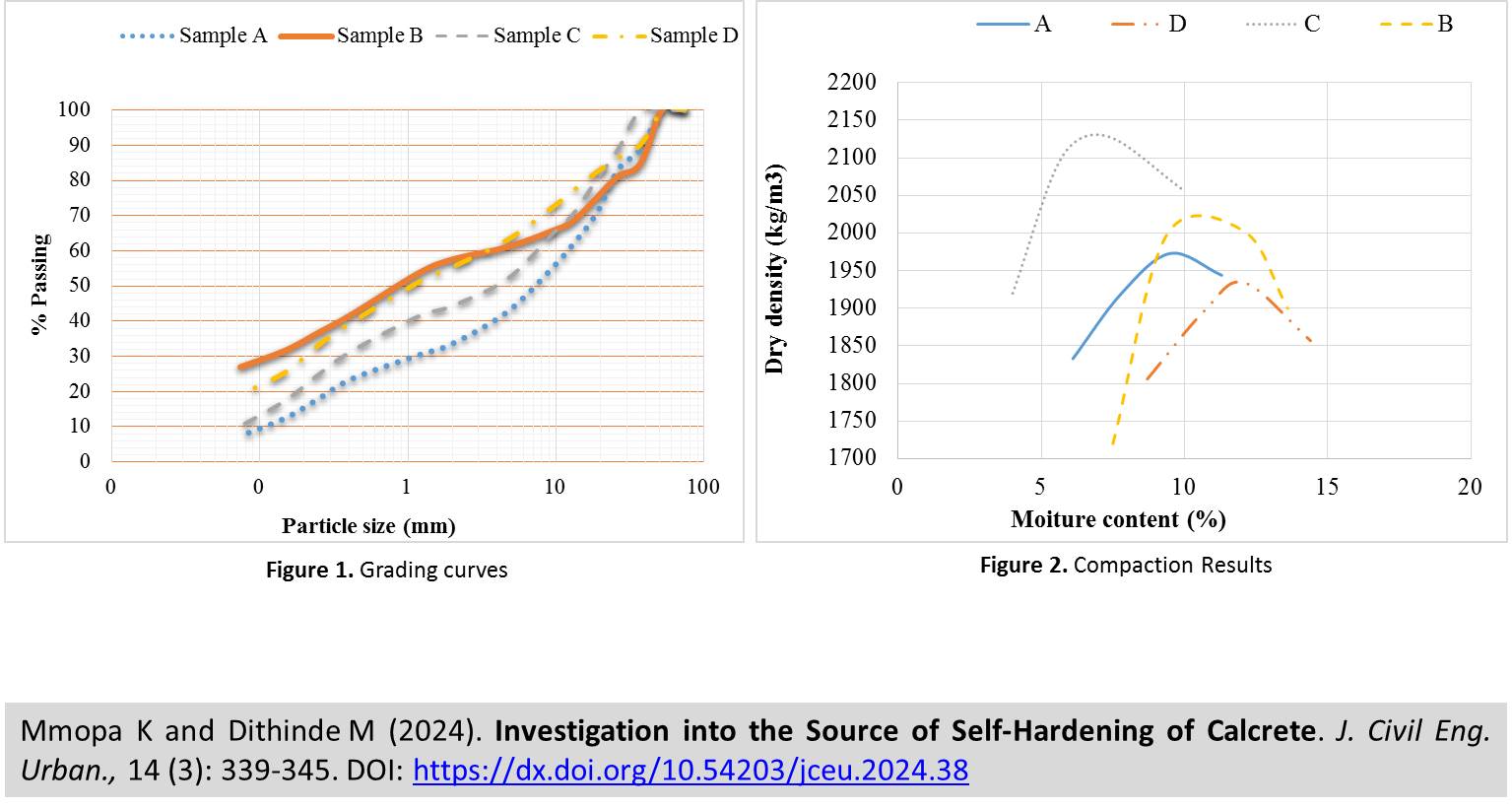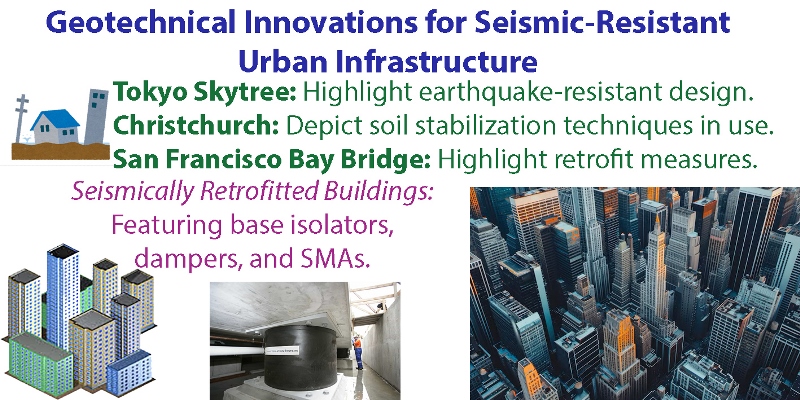Most read content
Partner Journal
<Previous issue | Next issue> | Archive
Volume 14 (3); 25 September, 2024
|
|
Research Paper
Investigation into the Source of Self-Hardening of Calcrete
Mmopa K and Dithinde M.
J. Civil Eng. Urban., 14(3): 339-345, 2024; pii:S225204302400038-14
DOI: https://dx.doi.org/10.54203/jceu.2024.38
Abstract
Calcrete has been used as road construction material in Botswana for a very long time even though it is classified as marginal or sub-standard material (AFCAP/MOZ/091, 2012). Some calcrete has proved to perform exceptionally well past the road design life and this has been attributed to a property termed self-stabilisation. However, the science behind self-stabilization of some calcrete deposit is not yet fully understood. Accordingly, this paper presents preliminary results of an investigation undertaken to determine the sources of self-stabilization of calcrete deposits. Calcrete samples were collected from borrow pits along Francistown – Nata road. The samples were subjected to a series of laboratory tests including soil indicator tests, standard California Bearing Ratio, California Bearing Ratio following wetting and drying cycles, Compaction, Petrification Degree, X-ray fluorescence and X-Ray Diffraction for types of minerals present. Preliminary results indicate that calcrete would only have potential for self-stabilisation if it can absorb an amount of water equal to its volume of voids. This allows the solution and deposition of orthoclase minerals to take place. It is concluded that self stabilisation depicted by some calcrete is attributed to their unique mineralogical composition of orthoclase.
Keywords: Calcrete, dissolution, deposition, orthoclase, self-stabilisation.
[Full text-PDF] [Crossref Metadata] [Export from ePrints]
|
|
Research Paper
Geotechnical Innovations for Seismic-Resistant Urban Infrastructure
Firoozi AA and Firoozi AA.
J. Civil Eng. Urban., 14(3): 346-355, 2024; pii:S225204302400039-14
DOI: https://dx.doi.org/10.54203/jceu.2024.39
Abstract
As urban areas continue to expand into seismically active regions, the imperative for developing earthquake-resistant infrastructure has never been greater. This paper presents a comprehensive examination of innovative geotechnical engineering solutions aimed at enhancing the resilience of urban infrastructure against seismic threats. It explores cutting-edge approaches including advanced base isolation techniques, soil liquefaction mitigation strategies, and the incorporation of shape memory alloys (SMAs) in foundation systems. Through detailed case studies, such as the Tokyo Skytree, Christchurch's soil stabilization projects, and the San Francisco Bay Bridge retrofit, the effectiveness, adaptability, and sustainability of these solutions are demonstrated. The paper conducts a comparative analysis of these technologies based on cost, implementation feasibility, and seismic mitigation effectiveness, and assesses their sustainability in the context of urban development. Despite facing challenges such as high initial costs and the need for specialized expertise, the potential of these technologies to significantly improve the safety and sustainability of urban environments is clear. The study concludes with a call for continued innovation, interdisciplinary collaboration, and proactive policymaking to foster the widespread adoption of these critical advancements. This research not only contributes to the academic field but also provides practical insights for engineers, urban planners, and policymakers striving to build more resilient cities in the face of increasing seismic risks.
Keywords: Earthquake-Resistant Design, Geotechnical Engineering, Urban Resilience, Soil Liquefaction, Base Isolation Techniques, Shape Memory Alloys
[Full text-PDF] [Crossref Metadata] [Export from ePrints]
<Previous issue | Next issue> | Archive
This work is licensed under a Creative Commons Attribution 4.0 International License (CC BY 4.0)![]()





